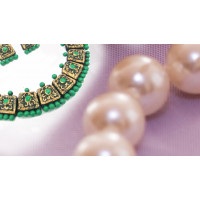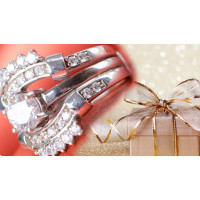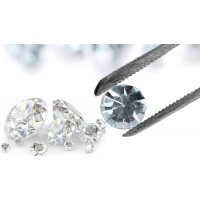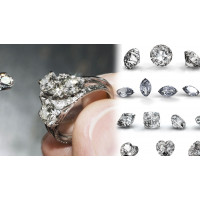anatomy of a ring: 5 terms you should know
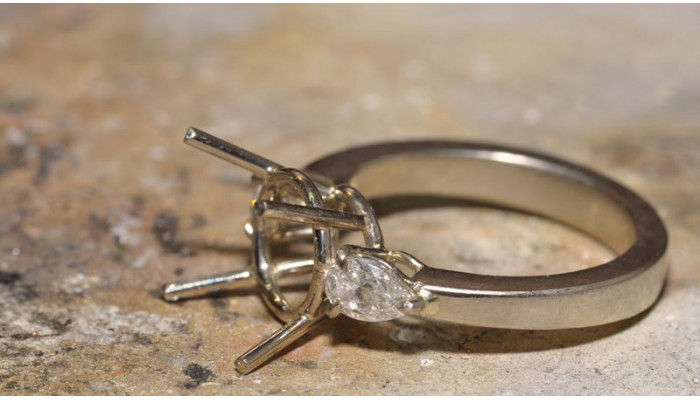
At the time of purchasing a ring, you may have come across puzzling phrases, that make no sense to you. Knowing the technical jargon may seem unnecessary, but understanding some words and expressions will help you make a smart and informed purchase. If you want to look up the terms that are in common parlance, don’t worry, we have got you covered. This article will be your guide in getting a complete understanding of the anatomy of a ring.
Shank
Shank simply refers to the band of the ring. It is used to describe the metal that encircles your finger. Shank is one of the most important parts of a ring, as it ensures a great fit and prevents the ring from spinning. Two of the most common shank types that you should know are Straight and Cathedral. A straight shank is as simple as it sounds. This is usually found in most solitaire rings. It is a continuous circle of metal with no splits or bends. A cathedral ring shank is the one where the stone is framed by two arches. Make sure to give extra attention while selecting a shank metal or design. Opt for a thick and strong shank, that fits your finger well. Resizing will not be a problem at all; the jeweller can easily add or remove some metal off the shank at your request.
Head
This term refers to the uppermost part of the ring that holds the centre stone together. This is the element that helps in better light reflection and makes the stone glow even brighter. The most popular style is the ‘pronged-head’. Prongs are the metal tips that hold the stone in place. Most prefer a six- or a four-pronged diamond solitaire. The more prongs a ring has, the more secured the centre stone will be. Apart from a prong setting, you can also find bezel and channel heads. They look a bit different, but their utility remains the same. So, at the time of your next purchase, take a look at the various heads, and choose the one that promises the best security for your stone.
Gallery
The gallery refers to the segment that is just underneath the centre stone. The gallery is meant to add some depth to the overall design of the ring. You can pick an elaborate design or choose to keep it simple. The main purpose of this part is to provide structural integrity to the ring. Always check the gallery, at the time of buying an engagement ring. Make sure to check the correct size of the gallery, if you are planning to pair it with your wedding ring.
Halo
Halo refers to a particular setting, where a series of smaller accent stones, encircle a larger centre stone. Halo rings are an excellent alternative to any solitaire and work well if you are on a budget. Also, they act as an extra layer of protection to the main, centre stone. If you are looking for unique diamond ring styles, then this is the one for you. Just make sure the accents stones are placed together securely.
Pavé
Although many of us tend to think that it is a style of diamond, but in reality, it is just a ring setting. It is a design where, tiny diamonds are attached to the shank, resulting in a continuous line or ‘pavement’ of gems, closely set together. The stones are put in place using small, metal prong or beads. If you are not a big fan of exposed metal tips, then consider a micro-pavé setting. The key difference is that micro-pavé settings use extremely small prongs, leaving very little metal exposed.
Knowing the terminology will help you select a ring with ease. So, make sure to give this a read before you set out to find the ring of your dreams!
Looking for the perfect ring? Do visit our website miorola.com for a whole range of new and exciting designs.
Related Posts
Terracotta Jewellery Is In : Here Is What You Need To Know
The chic, glamorous world of today has quite freely, opened its doors to a humbler and more unassuming genre, of terracotta jewellery. From illustrious galleries to local jewellers, terracotta jewellery has managed to create a ripple in the fashion community, with its charming and tasteful aesthetic. This style has picked up its pace in recent years and emerged as one of the coolest trends in town. Read on to discover more about this newest model of the fashion world. What is a terracotta jewel..
TOP 5 MOTHER’S DAY GIFTS: JEWELLERY EDITION
It is not always easy to find that perfect gift for your loved one. And, when it is your mom, the pressure is on, as she deserves the loveliest gift of all. Be it an assorted chocolate box, or a flower bouquet, it has to be something that shows your undying love and appreciation for her. So, on this occasion of Mother’s Day, we have shortlisted some of the best jewellery pieces that you can spoil your mother with. Engraved Gold Locket If you are thinking of getting something customised for you..
MOISSANITE VS DIAMOND: KNOW THE DIFFERENCE
To the inexperienced eyes, Moissanite and Diamond are almost indistinguishable. When you have to choose between these two, confusion is inevitable. This article will highlight the ways to tell them apart and make you understand which of them is just right for you. What is Moissanite? Moissanite is a naturally occurring silicon carbide. It is an extremely rare mineral, whose origin can be traced back to outer space. It was first discovered by French chemist Dr Henri Moissan in 1893. Appa..
WHICH DIAMOND CUT HAS THE MOST FACETS?
The beautiful sparkle of a diamond is what makes it beloved by so many. The enchanting effect is however arrived at, after hours of polish and an expert finish. If you have ever wondered what makes a diamond sparkle so much, then you are just at the right place. Read on to discover more about the intricate structuring of this versatile gem. What makes a diamond glitter? The characteristic sparkle of the gemstone is due to its high refractive index. The refractive quality depends a lot on ..
